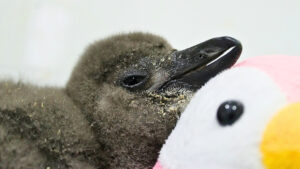
New research from Monash University has unveiled the astonishing speed and precision of venomous snake strikes. Utilizing high-speed 3D cameras, scientists documented the striking mechanisms of various snake species, including vipers and cobras, revealing details previously unseen by the human eye. The study, published in the Journal of Experimental Biology, represents the first comprehensive analysis of strike performance across 36 venomous species worldwide.
Lead author Dr. Silke Cleuren, who conducted this research as part of her PhD under Professor Alistair Evans in the School of Biological Sciences, aimed to understand the unique venom-delivery strategies developed by different snake families. “Venomous snakes have perfected the art of speed, accuracy, and control,” Dr. Cleuren stated. “Some vipers can reach their prey in less than one-tenth of a second, faster than the human eye can blink. But what’s really remarkable is how differently each group achieves the same deadly goal.”
Research Methodology and Findings
To gather this data, Dr. Cleuren traveled to Venomworld, located on the outskirts of Paris, where venom is collected for medical and pharmaceutical purposes. Collaborating with Anthony Herrel from the Museum national d’Histoire naturelle and Remi Ksas from Venomworld, the research team filmed species such as the western diamondback rattlesnake, West African carpet viper, and rough-scaled death adder as they struck a heated gel designed to mimic animal flesh, capturing their movements at a staggering 1,000 frames per second.
“Annoying a venomous snake with a piece of gel on a stick was an incredible adrenaline rush; I’ll admit I flinched a few times,” Dr. Cleuren reflected. The footage obtained provided insights into behaviors that are impossible to observe with the naked eye.
The results revealed significant differences in striking techniques among the species. Vipers, for instance, strike within 100 milliseconds and then maneuver their fangs into position to inject venom. Elapids, which include cobras and death adders, typically approach their prey before striking and may bite repeatedly to ensure venom delivery. In contrast, colubrids, whose fangs are located further back in their mouths, employ a side-to-side jaw movement to create gashes for maximizing venom transfer.
Evolutionary Insights into Venomous Snakes
Professor Evans emphasized the implications of these findings for understanding the evolution of snake strikes. “Each snake family has evolved a strike perfectly tuned to its hunting style and prey,” he noted. “It’s a brilliant example of how evolution shapes form and function in the natural world.”
This groundbreaking research not only enhances our understanding of snake behavior but also sheds light on the evolutionary pressures that have shaped these remarkable adaptations. As scientists continue to explore the intricacies of venom delivery, the findings may contribute to advancements in medical science and the development of antivenoms.
The exploration of snake strikes serves as a reminder of the incredible adaptations found in nature and the ongoing quest for knowledge about these fascinating creatures.







